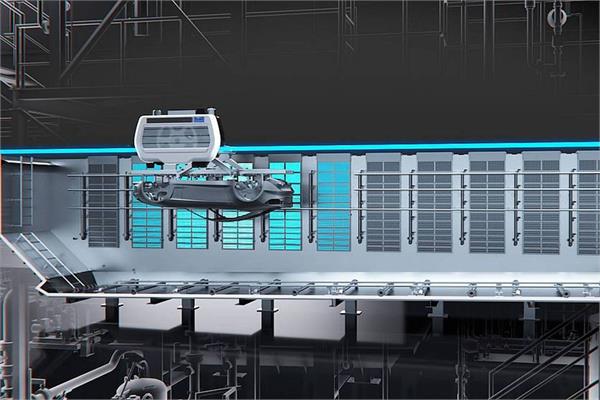
The new EcoDC MACS rectifier for cathodic electrocoating from Dürr provides 50% more power with same space requirement.
The German engineering company Dürr has presented EcoDC MACS, a newly developed rectifier for cathodic electrocoating that provides 50% more power with the same space requirement, allowing to design the layout of new plants more flexibly and easily increase the capacity of existing systems.
The immersion phase during the cathodic electrocoating process could be usually split only into a few areas when using conventional thyristor rectifiers. If a rectifier failed, then a big part of the current would become unavailable, resulting in imperfect coating.
The new rectifier from Dürr split the previously large thyristor rectifiers into several smaller modules, each of which supplies voltage to just a small section of the tank. The failure of one rectifier no longer negatively impacts coating quality, so it also saves energy and cuts operating costs because of its increased efficiency and the significantly-reduced investment for replacement units. In addition, EcoDC MACS enables to control individual anodes, allowing a much more precise voltage regulation in the immersion bath.
Increased efficiency and simplified troubleshooting
Dürr has increased the efficiency of its EcoDC MACS rectifier by replacing the conventional insulated-gate bipolar transistor (IGBT) modules with modern semiconductors made from silicon carbide (SiC), resulting in more power with less waste heat and a lower cooling air requirement.
The company carried out a sample calculation with a paint shop coating 58 car bodies per hour and the SiC semiconductors at around 45 kW. Assuming 20 hours of production per day, 230 working days per year and an electricity price of 0.21 euros per kWh, the energy cost is reduced by more than €43,000 per year – in addition to savings from improved network quality and minimal reactive power.
Dürr has also optimised data transfer from the rectifier module to the control unit, which is now transferred via a customary Profinet or Ethernet IP interface instead of through a special ring bus system, simplifying troubleshooting and guaranteeing higher plant availability.